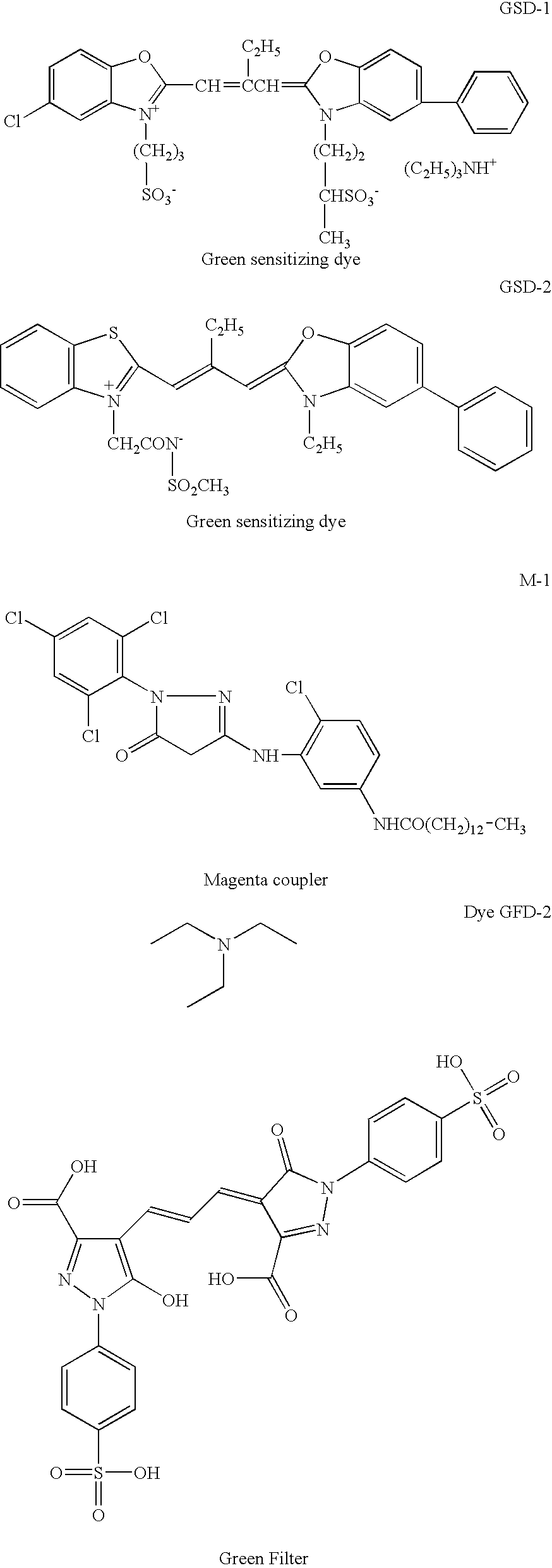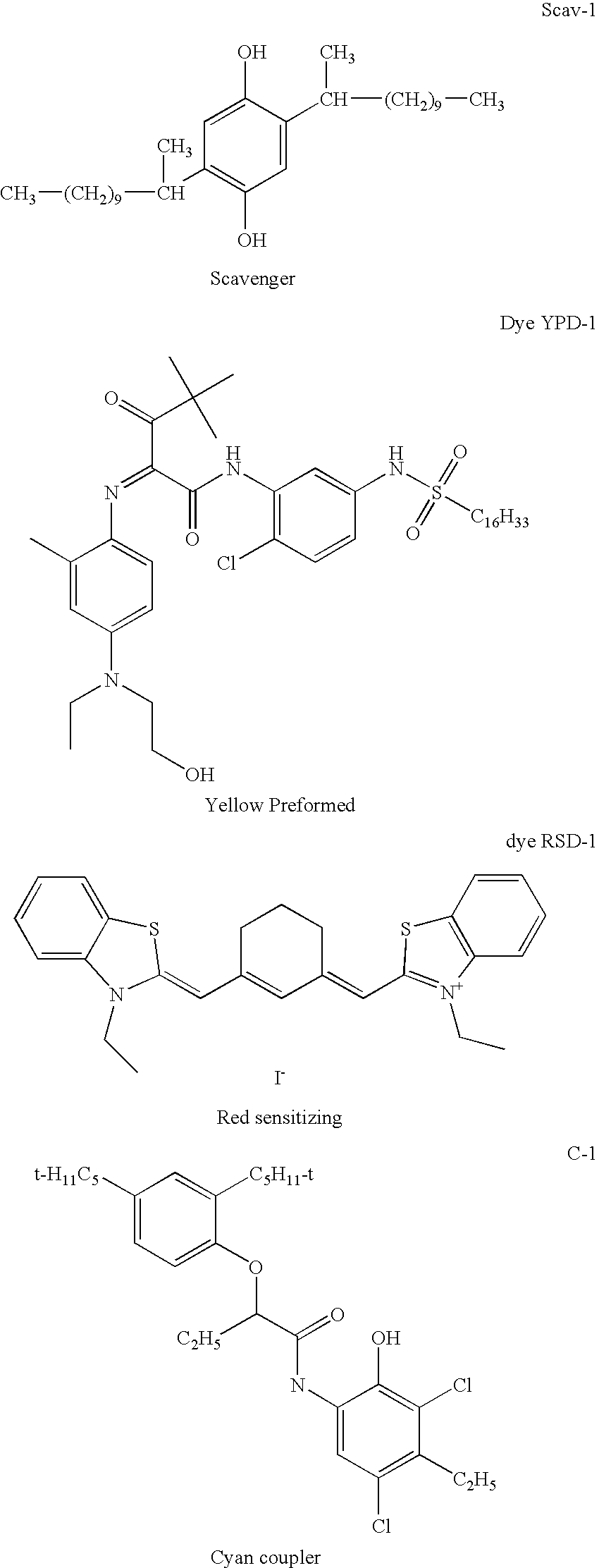Color motion picture print film
- Summary
- Abstract
- Description
- Claims
- Application Information
AI Technical Summary
Benefits of technology
Problems solved by technology
Method used
Image
Examples
example 2
[0044] Comparison photographic color print film Element 105 (total silver halide emulsion coverage 1471 mg / m2, based on silver) was prepared according to the following formulation:
Protective OvercoatGelatin976Polydimethylsiloxane lubricant (Dow Corning)16Polymethylmethacrylate beads16Spreading AidsGreen Emulsion LayerAgClBr cubic grain emulsion GE-1, 1.35% Br, 0.14 micron,68spectrally sensitized with green sensitizing dye GSD-1,0.363 mmole / Ag mole, and green sensitizingdye GSD-2, 0.012 mmole / Ag mole.AgClBr cubic grain emulsion GE-2, 1.2% Br, 0.18 micron,316spectrally sensitized with green sensitizing dyeGSD-1, 0.293 mmole / Ag mole, and greensensitizing dye GSD-2, 0.009 mmole / Ag mole.AgClBr cubic grain emulsion GE-3, 1.7% Br, 0.26 micron,57spectrally sensitized with green sensitizingdye GSD-1, 0.273 mmole / Ag mole, and greensensitizing dye GSD-2, 0.008 mmole / Ag mole.Magenta Dye Forming Coupler M-1648Green Filter Dye GFD-254Oxidized Developer Scavenger Scav-116Gelatin1426InterlayerOxi...
example 3
[0053] Elements 109 and 110 were processed similarly as described in as described in Example 2, except employing Color Developer II in place of Color Developer I, and Amplifier II in place of Amplifier I.
[0054] The Color Developer II comprises:
Kodak Anti-Calcium, No. 4 (40% solution of a pentasodium1.00 mLsalt of nitrilo-tri(methylene phosphonic acid)Sodium sulfite (anhydrous)4.35 gSodium bromide (anhydrous) 0.5 gSodium carbonate (anhydrous)17.1 gKodak Color Developing Agent, CD-2 3.7 gSulfuric acid (7.0N)0.62 mLWater to make 1 literpH @ 26.7° C. is 10.65 + / − 0.05
[0055] The Amplifier II comprises:
Kodak Anti-Calcium, No. 4 (40% solution of a pentasodium1.00 mLsalt of nitrilo-tri(methylene phosphonic acid)Sodium carbonate (anhydrous)17.1 gH2O2 (30%) 15 gColor Developer II 10 mLWater to make 1 literpH @ 26.7° C. is 10.8 + / − 0.05
[0056] The results obtained are reported in Table 3:
TABLE 3VisualSilver ContentElementDmax(mg / m2)Efficiency1103.784907.711093.948174.82
[0057] The above...
example 4
[0058] Typically, reducing the silver in an element processed in a standard development process reduces the speed and the contrast of the film to an unacceptable level. This is demonstrated by a comparison of commercially available color print film Element 101 (1636 mg / m2 silver) and Element 107 in accordance with the invention (1144 mg / m2 silver) processed without amplification as described in Example 1. In an amplified process, Element 107 in accordance with the invention regains its speed, as demonstrated by the processing of Element 107 through an amplified development process as described in Example 2, and even surpasses conventionally processed Element 101 by more than half a stop in the blue record, as indicated by the data in Table 4, where delta speed is 100 times the difference in loge necessary to reach density of 1.0. However, the contrast of element 107 is even lower after amplified development than it is in the non-amplified process. By adjusting the ratio of the emuls...
PUM
 Login to View More
Login to View More Abstract
Description
Claims
Application Information
 Login to View More
Login to View More - Generate Ideas
- Intellectual Property
- Life Sciences
- Materials
- Tech Scout
- Unparalleled Data Quality
- Higher Quality Content
- 60% Fewer Hallucinations
Browse by: Latest US Patents, China's latest patents, Technical Efficacy Thesaurus, Application Domain, Technology Topic, Popular Technical Reports.
© 2025 PatSnap. All rights reserved.Legal|Privacy policy|Modern Slavery Act Transparency Statement|Sitemap|About US| Contact US: help@patsnap.com



